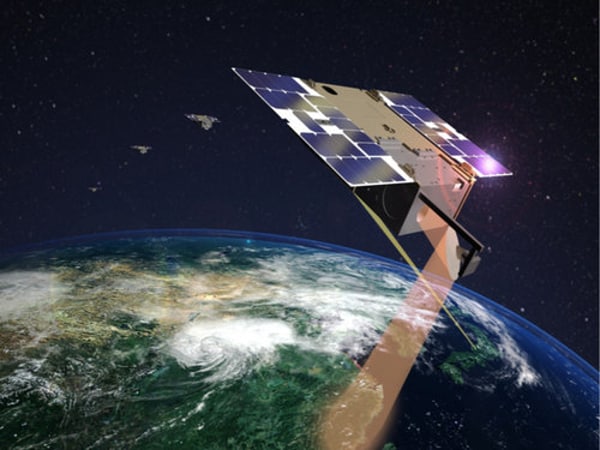
Dubbed IOD-1 GEMS, the miniaturised weather observing and forecasting technology is the first of the Satellite Applications Catapult’s In-Orbit Demonstration (IOD) Programme, which is funded by Innovate UK. It is also the first satellite in Orbital Micro Systems’ (OMS) Global Environmental Monitoring System (GEMS) constellation.
“Through the support and collaboration with Satellite Applications Catapult and other IOD team members, OMS is now positioned to be a market leader in gathering and delivering actionable comprehensive, accurate, and frequent weather data,” said William Hosack, CEO of OMS, which is headquartered in Boulder, Colorado and has expanded to Edinburgh.
OMS’ Passive Microwave Sounder instrument is said to be less than a quarter of the size and over 70kg lighter than the existing equivalent, which has reduced deployment costs by 95 per cent.
After deployment, the satellite will gather and transmit atmospheric observation data which will be aligned and integrated with other atmospheric and weather datasets at OMS’ International Center for Earth Data (ICED) in Edinburgh. In use, airlines and maritime operators will be able to use the satellite’s data to plan routes that optimise weather conditions, reducing delays, fuel consumption and emissions while increasing safety.
The IOD-1 GEMS satellite is the first of a planned constellation comprising 48 CubeSats designed to improve the temporal frequency of global microwave radiation observations to intervals approaching 15 minutes. OMS anticipates launching six additional GEMS satellites during the first months of 2020.
Data collected by the GEMS constellation will be available to commercial, government, and research subscribers from ICED, which aggregates and processes weather information. The data produced from ICED is expected to have an impact on the lives of millions of people by helping to improve crop management and catastrophe risk management in areas where natural disasters are prevalent.
“We believe we are creating a new paradigm in weather forecasting,” said Hosack. “The IOD Programme allows us to prove our technology in space and de-risk it for both investors and customers. An extraordinary “space ecosystem” has been developed in the UK and OMS is excited to be investing in it.”
The satellite was launched on April 17, 2019, from NASA Wallops Flight Facility on Wallops Island, Virginia.


Swiss geoengineering start-up targets methane removal
No mention whatsoever about the effect of increased methane levels/iron chloride in the ocean on the pH and chemical properties of the ocean - are we...